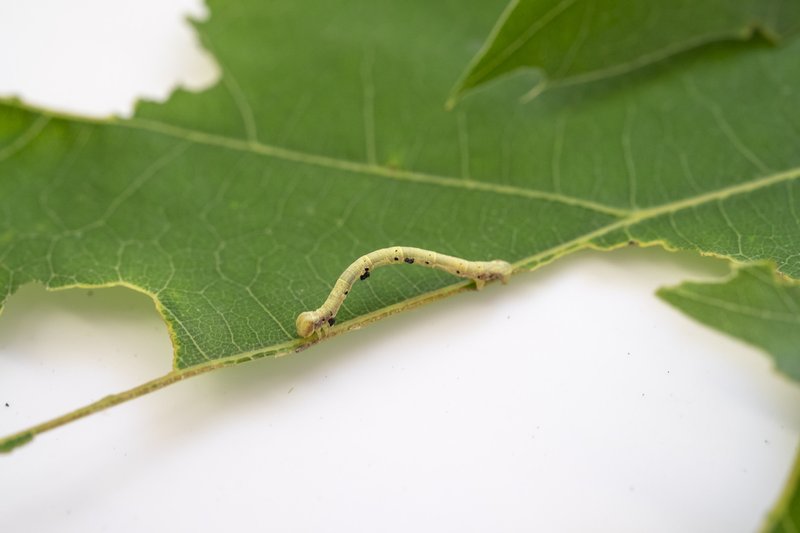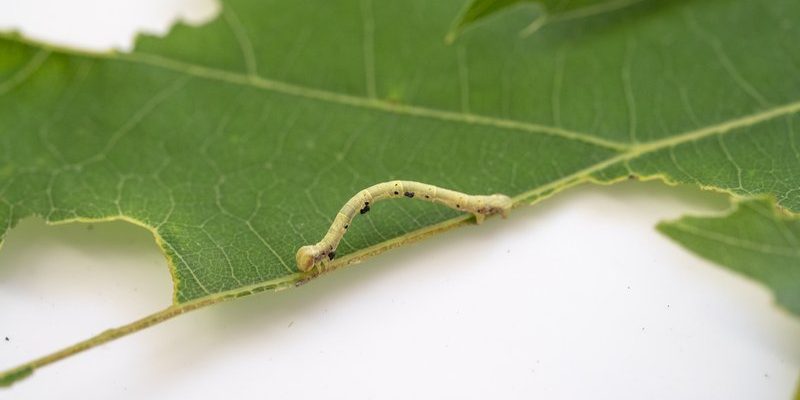
Inchworms, belonging to the geometer moth family, are named for their unique movement, inching along like they’re measuring their way across a branch. They primarily feed on the leaves of various plants, and when they target your young fruit trees, it can be a bit like letting a toddler run loose in a candy store—exciting at first, but ultimately a recipe for trouble. Understanding the behavior of inchworms and their effects on young fruit trees is crucial for any aspiring gardener looking to cultivate a healthy orchard.
What Are Inchworms?
Inchworms are larvae of the geometer moth, and their name comes from their distinctive way of moving. They “inch” along by arching their bodies and pulling their hind end forward—an action that can make them look quite fascinating to observe. While there are many species of inchworms, they all share a common trait: a diet that often includes the leaves of fruit-bearing trees like apple, peach, and cherry.
These little guys enjoy munching on leaves, which is where the problem starts. You might notice holes in the leaves of your trees, and that’s inchworm damage. Honestly, it’s easy to overlook them at first because they blend in with their surroundings—making it hard to spot a hungry inchworm until the damage is done.
But in their defense, inchworms are part of a natural ecosystem. They serve as food for various birds and other wildlife. Still, when they invade your young fruit trees, it’s essential to take action before they cause too much harm.
How Inchworms Damage Young Fruit Trees
The impact of inchworms on young fruit trees can be considerable. They primarily feast on leaves, and since young trees rely heavily on their foliage for photosynthesis, losing those leaves can stunt their growth. Think of it this way: a fruit tree without leaves is like a person trying to run a marathon while holding their breath. It’s just not going to work out well!
As inchworms munch away, they might create a few holes in the leaves, but with larger infestations, they can strip entire branches bare. Sometimes, you’ll notice that inchworms prefer younger leaves, leaving older ones untouched. This selective feeding can create uneven growth, leading to a lopsided tree that struggles to bear fruit properly.
In severe cases, if the infestation is not managed, it could lead to tree stress or even death. This isn’t just a loss of fruit for you; it’s a sad day for the entire ecosystem around your tree.
Identifying an Inchworm Infestation
Recognizing the signs of an inchworm infestation is crucial for taking swift action. Look closely at your young fruit trees for:
- Leaf Damage: Check for holes or missing leaves. If you see a significant number of leaves with bites taken out of them, inchworms may be the culprits.
- Presence of Inchworms: These creatures can be tricky to spot. Look closely at the branches and leaves, especially during the day when they might be resting.
- Caterpillar Droppings: Small black or brown droppings beneath the tree can indicate a larger problem. If you see these, take a moment to investigate the tree further.
- Webbing: Some inchworms create webbing to help protect themselves. If you notice silky threads, it’s worth checking for these little pests.
Regularly inspecting your trees is essential. It’s a lot like checking your car’s oil—you don’t want to wait until the engine starts making strange noises before you take a look!
Preventing Inchworm Infestations
The good news is that there are several proactive steps you can take to prevent inchworms from making your young fruit trees their buffet. Here are some effective strategies:
- Healthy Trees: Start off with well-cared-for trees. Healthy trees are more resilient and less likely to succumb to pest issues.
- Regular Inspections: Keep a close eye on your trees. Regularly checking for early signs of inchworm activity can help catch infestations before they spiral out of control.
- Encourage Beneficial Insects: Ladybugs and lacewings love to munch on inchworms. By creating a habitat for these beneficial insects, you’re giving your trees extra protection.
- Companion Planting: Consider planting certain herbs or flowers around your fruit trees. Plants like marigolds can deter pests and attract helpful critters.
By being proactive, you can significantly reduce the chances of an inchworm infestation and keep your trees strong and healthy.
Treating Inchworm Infestations
If you find that inchworms have already taken up residence in your young fruit trees, don’t worry! There are several treatment options available to help manage the situation. Here are some effective ways to treat an infestation:
- Handpicking: For smaller infestations, simply handpicking inchworms off your trees can be effective. Wear gloves, and drop them in a bucket of soapy water.
- Neem Oil: This natural pesticide can be effective against inchworms. Spray it on affected areas, and it will disrupt their growth and feeding.
- Insecticidal Soap: Applying insecticidal soap can help control small populations. Just be sure to follow the instructions on the label.
- Bt (Bacillus thuringiensis): This natural bacterium targets caterpillars and can be an effective treatment for controlling inchworm populations without harming beneficial insects.
Always read the labels and follow application directions if you choose to use chemical treatments. Remember, your goal is to protect your trees while also maintaining a healthy environment.
The Importance of Timing
Timing is crucial when it comes to dealing with inchworms. They’re often most active in the spring when your young fruit trees are just beginning to leaf out. That’s why checking your trees regularly during this season is essential.
If you notice signs of inchworms, addressing the problem quickly can prevent significant damage. Often, the sooner you act, the less impact they’ll have on your trees. It’s like dealing with a small leak in your roof—it’s much easier to fix it early than to wait until you have a full-blown waterfall inside!
Inchworms can indeed pose a threat to young fruit trees, but with diligence and some know-how, you can keep your garden healthy. By understanding what these pests are, recognizing the signs of an infestation, and taking preventive measures, you’ll have a strong grip on maintaining the health of your trees.
Remember, nurturing young fruit trees is much like raising kids: you’ve got to keep an eye on them, provide the right environment, and address issues as they arise. With the proper care and attention, you can enjoy bountiful harvests from your trees year after year—without the pesky inchworm interruptions!

